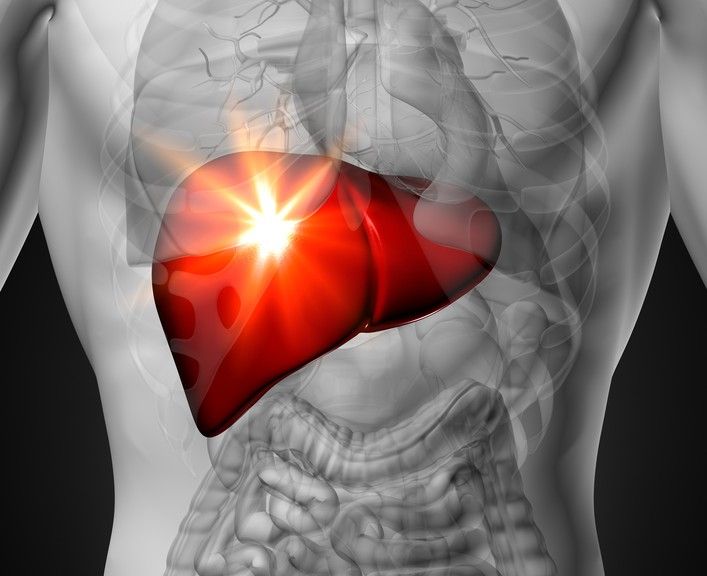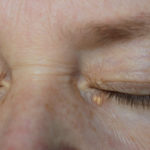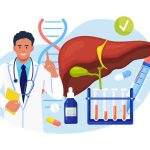
Previous
SST Is Back

Next
More Evidence That a Fatty Liver Benefits from Probiotics
Good Reason to Thwart Fatty Liver Disease
Evidence increases the motivation to prevent fatty liver disease from progressing to cirrhosis.
An estimated 25 to 30 percent of Americans have a fatty liver, a condition that can progress to cirrhosis if not detected early enough and managed diligently. A study from the United Kingdom highlights the hazards of cirrhosis, providing even greater incentive to screen for fatty liver disease and prevent this condition from causing cirrhosis of the liver.
About a Fatty Liver
Fatty liver is a condition describing excessive fat accumulation in the liver. Although the exact cause has yet to be determined, the main risk factors for fatty liver are obesity and metabolic syndrome. According to hepatologist and assistant professor of medicine at Mount Sinai, Dr. Charissa Chang says, “Fatty liver is the liver manifestation of metabolic syndrome. So it’s associated with all the other features of metabolic syndrome: high blood pressure, diabetes, high cholesterol and an increased waistline.”
Although those who drink alcohol are notoriously vulnerable to fat accumulating in their liver and are especially likely to suffer from liver problems, non-drinkers are not immune from liver ailments. Describing the accumulation of fat in the liver in people who drink little or no alcohol,non-alcoholic fatty liver disease (NAFLD) is the most common liver disease in the United States.
Casually referred to as a fatty liver, NAFLD describes two conditions: steatosis and non-alcoholic steatohepatitis (NASH). Steatosis is a mild condition where fat in the liver is not accompanied by inflammation or damage. NASH is the more severe stage where fat accumulation is accompanied by inflammation. A result of the inflammation, scar tissue can accrue with NASH – a process that can escalate to cirrhosis of the liver.
About Cirrhosis
Cirrhosis is a slowly progressing disease in which healthy liver tissue is replaced with fibrous scar tissue. In the liver, scar tissue has the following repercussions:
• It blocks the flow of blood, thus hindering blood detoxification.
• It slows the processing of nutrients, hormones, drugs and naturally produced toxins in the liver.
• It slows the production of proteins and other crucial substances made by the liver.
Not surprisingly, cirrhosis deteriorates the liver’s ability to function. According to the National Institutes of Health, cirrhosis is the 12th leading cause of death by disease in the U.S. Fatty liver, Hepatitis C and alcohol abuse are the most common causes of liver cirrhosis, but anything that damages the liver can cause cirrhosis.
Cirrhosis Warning from Fatty Liver
As published online in the June 2011 edition of Hepatology, researchers undertook a study to examine and compare the long-term morbidity and mortality of patients with advanced NAFLD and advanced, chronic Hepatitis C. Of the data collected, the researchers happened upon an important discovery for those with fatty liver disease.
Although not much of a surprise, they found that those with fatty liver that had progressed to cirrhosis (stage 4 on the Child-Pugh scale) were in a much worse position than those with a fatty liver that had only progressed to advanced fibrosis (stage 3 on the Child-Pugh scale). More specifically:
• Those with NAFLD and stage 4 scarring (cirrhosis) had a higher occurrence of liver-related complications, including liver cancer, than those with stage 3 liver scarring.
• Those with NAFLD and stage 4 scarring (cirrhosis) were associated with liver-related mortality more than those with stage 3 liver scarring.
Preventing Cirrhosis
According to Chang, “Once there is cirrhosis in a patient with NASH, there aren’t a lot of options to reverse the damage.” Obviously, the message from Dr. Chang and this British study is to detect fatty liver disease as soon as possible and implement strategies to prevent its progression to cirrhosis in the first place.
Signs and symptoms of NAFLD before significant liver damage occurs can easily go undetected. Thus, the first step towards preventing a fatty liver from progressing to cirrhosis is to implement routine screening. Early detection of NAFLD can help more people engage in the following steps to prevent cirrhosis:
• Abstinence – Drinking alcohol is a guaranteed route towards liver cell destruction. While some sources suggest limiting alcohol consumption, those with confirmed NAFLD are advised to completely abstain from drinking alcohol.
• Minimize Toxin Exposure – Reduce exposure to synthetic chemicals, such as cleaning products and pesticides, because they put an additional burden on functioning liver cells. If you come into contact with chemicals often, wear protective clothing and a facemask.
• Vaccinate – If not already current, make sure vaccinations against Hepatitis B and Hepatitis A are up-to-date. Becoming ill with one of these preventable viruses while managing NAFLD makes the liver more vulnerable to damage.
hepatitis-c
• Nutrition – Eating a nutritious, well-balanced, low-fat diet helps supply the body with the ingredients needed to function optimally. On the other hand, consuming processed, sugary or fatty foods fans the flames of liver inflammation.
• Protect Liver Cells – Known to strengthen the outer walls of liver cells to prevent against damage, supplementing with milk thistle can stave off further liver injury. Additionally, liver cells can be protected from oxidative damage by loading up on antioxidant-rich foods.
Considering that at least a quarter of American adults are affected (and a majority don’t know it), there is every reason to include fatty liver disease screening into routine health maintenance programs. In addition, those with confirmed NAFLD are advised to discourage its advancement in every way possible. As confirmed by research from the United Kingdom, preventing cirrhosis may play a prominent role in reducing liver complications and death as a result of fatty liver disease.
http://articles.nydailynews.com/2010-10-06/entertainment/27077329_1_liver-disease-metabolic-syndrome-hepatitis, The skinny on fatty liver: Weight and metabolic disorders put millions at risk, Katie Charles, Retrieved July 9, 2011, NY DailyNews.com, 2011.
http://onlinelibrary.wiley.com/doi/10.1002/hep.24491/abstract, The natural history of nonalcoholic fatty liver disease with advanced fibrosis or cirrhosis: An international collaborative study, Neeraj, Bhala, et al, Retrieved July 8, 2011, Hepatology, June 2011.
http://www.doctorslounge.com/index.php/news/pb/21276, Fewer Complications With NAFLD Than Hepatitis C Virus, Retrieved July 8, 2011, HealthDay, 2011.
http://www.webmd.com/digestive-disorders/cirrhosis-liver, Cirrhosis of the Liver, Retrieved July 9, 2011, WebMD, LLC, 2011.










